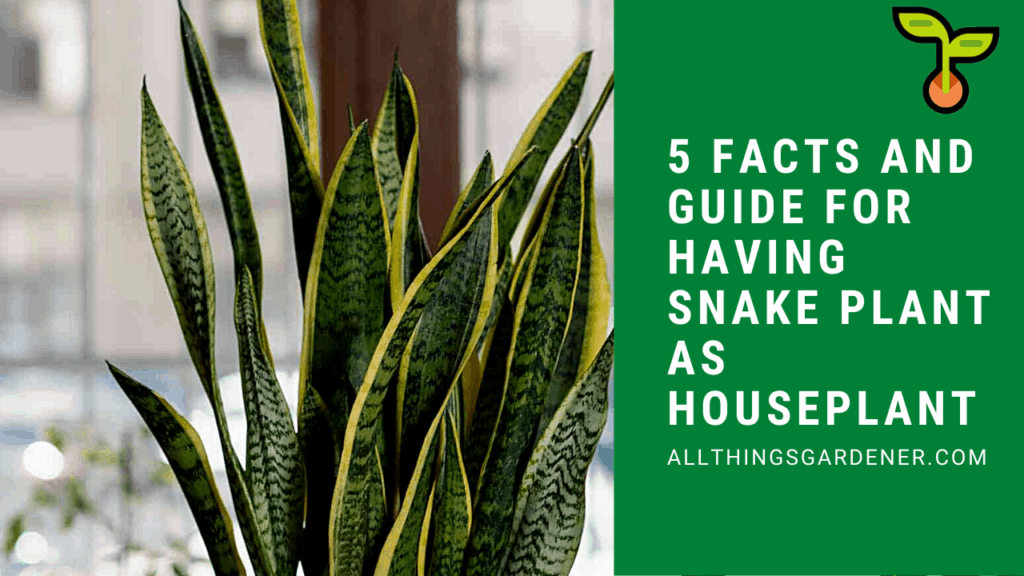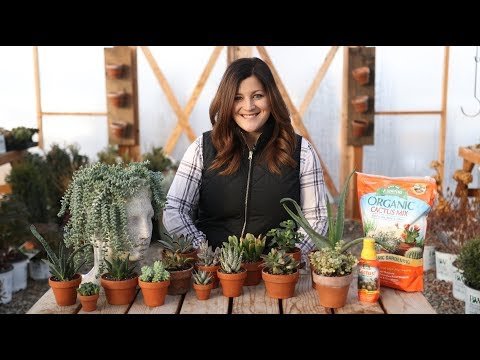Starting out with succulents, you may be overwhelmed by the many weird and wonderful varieties available. The sad thing for beginners is that they might get disappointed if they end up purchasing every succulent they see.
There are some succulents that are actually difficult to keep alive, even though they are very popular. In spite of this, there are still many beginner-proof succulents available that are great for beginners and will forgive the occasional mistake.
Read on to find out which succulents are easy to grow even for beginners!
Jade plant (Crassula ovata)
One of the easiest varieties of succulent to grow indoors is Crassula ovata, also called the Jade plant, which is probably one of the most popular indoor succulents. When it is sold as a tiny succulent with just a few leaves, it can actually take years of care to develop into an attractive tree shape with a woody base.
You can grow your Jade plant in any well-draining soil type, anywhere that gets plenty of sun and a good soak when the soil is completely dry.
The classic houseplant Crassula ovata has spoon-shaped leaves in a range of colors and shapes—what many of us call spoons—instead of green.
Examples include the wavy leaves of Crassula ovata ‘Undulata’, which is appreciated for its shape and the long finger-shaped leaves of Crassula ovata ‘Gollum’. Everyone can find their favorite Crassula ovata cultivars!
Foxtail agave (Agave attenuata)
For someone who enjoys Agaves but does not appreciate their spiked leaf tips, Agava attenuata may be a good choice. In addition to making a super easy plant to grow, it also has soft leaf tips and a lovely rosette shape. When grown outdoors, agaves can grow huge, but when grown indoors, they typically grow a little smaller.
To stay happy and healthy, Agave attenuata doesn’t need much. Provide well-draining soil and be sure to use a pot with drainage holes so there will be no risk of excess water causing rot. Here are some tips for growing succulents like Agave if you don’t know how to plant them. You can place Agave attenuata directly next to a window in direct sunlight or in indirect light for best results.
Most Agave species should work relatively well indoors, even if you cannot find Agave attenuata. Even though they’re tough, some might be a little soft and need direct sun, but they’re all quite hardy.
Gasteria ‘Little Warty’
Gasteria ‘Little Warty’ is a fun and entertaining addition to any succulent collection with its silly common name and unusual appearance. As long as its requirements are met, it’s easy to keep alive and thrive. In fact, Gasteria succulents are one of the few species that thrive without much sunlight, which comes in handy indoors, where light can be an issue.
Gasteria ‘Little Warty’ is a clumping plant that grows plantlets at the base and eventually forms big clumps. In any location where you receive indirect, bright light, you can grow it. It is not a problem to expose a plant to direct sun but you need to avoid direct sun exposure in the afternoon to prevent burns.
Plants actively growing during summertime should be watered with gritty soil mixture. Soil can be allowed to dry out completely during winter months, when Gasterias require less water.
Aeonium ‘Zwartkop’ (Aeonium arboreum ‘Zwartkop’)
The deep, deep purple to black coloration of the Aeonium arboreum cultivar is a show-stopper. One single rosette grows on a thick, woody stem, giving it the appearance of a tree. It is one of the most beautiful trees there is, and the planting of it is very simple provided it’s given the right conditions.
You should keep a few things in mind when growing Aeonium ‘Zwartkop’ indoors. You have to find a spot that gets enough light if you’re keeping it inside all year round. The plant can go into hibernation mode during the summer when it gets too hot. Although the chances of full hibernation indoors are very low, your Aeonium’s growth might stall a little as temperatures rise.
The succulents on this list are a little more water-tolerant than many others on this list, which comes in handy if you tend to over water your succulents. If you notice that the ground has become dry, water it.
Aeonium ‘Zwartkop’ is best planted in a mix that is a little less gritty than cactus soil but still contains plenty of perlite for drainage.
Ponytail palm (Beaucarnea recurvata)
Although Beaucarnea recurvata has the common name Palm, it is a succulent similar to Agaves. You don’t need much of this slow grower to keep it happy, making it a good option for beginners.
This one requires just normal succulent soil, the sunniest location possible and watering when the soil has gone dry. In the summer, this one can dry out pretty quickly and needs watering about one to two times a week.
Be aware that it may take some time before ponytail palms acquire their typical fat, woody base. More like onions will be the juveniles! In case that’s not the look you’re interested in, be sure to buy a mature ponytail palm or you’ll find yourself waiting a long time.
Mother of Thousands (Kalanchoe daigremontiana/Bryophyllum daigremontianum
The Mother of Thousands succulent is not hard to grow and can withstand tough conditions. An excellent choice for beginners, but you’d better keep it away from your other plants because of its strong smell.
Whenever this succulent grows plants along the edges of its leaves, it drops baby plantlets all over the place, which means that any pot standing too close may be swarming with babies, crowding out the original inhabitant. At first glance, it seems cute, but in the long run it can become quite irritating.
You must provide as much light as possible to your Mother of Thousands succulent in order to keep it happy. A container made of terracotta with a drainage hole and gritty soil mixture should be used. Water this plant more often than you would most other succulents; it can handle dry soil, but will do better if it stays lightly moist during the growing season.
African spear plant (Sansevieria cylindrica)
The genus Sansevieria generally takes little attention. Overwatering seems to be the leading cause of death for these succulents, but neglect can also kill them. Sansevieria cylindrica is just one of the many varieties of this plant, but its quirky appearance is why I like it so much.
Many people believe that Sansevierias thrive under extremely low-light conditions. It is true they can survive without much light for years, but they won’t grow very much or thrive. Providing as much light as possible is actually preferable.
You should be very careful when watering your plants. It is important to use a super gritty soil mixture and to not water it until it becomes bone dry, which is probably about once every two weeks during the summer and less than once a month during winter. You don’t need to water if you’re not sure, just skip it for another week since the roots are less likely to rot.
Easter lily cactus (Echinopsis subdenudata)
So, let’s make up for the lack of cacti on this list with a species that is perfect for beginners and has a beautiful secret to offer. Although the round Easter lily cactus has a polka-dotted appearance, it still looks better when it blooms. Despite being short lived, the flowers are nothing short of spectacular!
Traditionally found in Bolivia, the Easter lily cactus likes a little more water than the average cactus, since it does not grow in desert habitats. Yet, it needs a very well-draining soil, and you should wait until the soil is completely dry before watering again.
During the growing season, a dash of cactus fertilizer should encourage healthy growth and maybe even some flowers.
Aloe barbadensis
Aloe barbadensis is often grown in the US for its medicinal properties, as well as Aloe vera and a bunch of other names. This plant would make a nice houseplant too if you are just looking for a nice and easy to care for plant.
You only need a terracotta pot with drainage holes and some loamy, well-draining soil to grow a healthy Aloe barbadensis. Succulents of the Aloe genus grow better in indirect sunlight than most others, but still, inside you’ll be hard-pressed to burn them. In any case, if you are a bit too bright, the plant will warn you by taking on a reddish hue in its leaves.
You can share Aloe barbadensis with your family and friends since it is propagated very easily. You can divide pups off of a healthy plant with a knife, which you can pot up into their own planter. You’ve got brand new Aloes to keep or give away.
String of buttons (Crassula perforata)
It is a favorite among beginners and very popular indoor succulent, the string of buttons plant. When given the right care, it will grow rapidly, growing taller and forming pups at its base. Place your Crassula perforata in the sunniest area you can, as you would most succulents on this list, and water only when needed.
The soil should be watered whenever the soil becomes dry. In wintertime the soil should be watered about once a month.
Plants that get a little tall for your liking can simply be cut back from their heads and replanted. Branches are encouraged and the pot will appear fuller in no time!
______________________________________________________________________________________________________________________________
There are still many recent and interesting articles about Snake Plants..
..as well as other unique information from All Things Gardener..
For further information and other inquiries..
..you can contact us here

3 Superb Facts About Sansevieria or Snake Plant Good Can Improve Air Quality in the House 2021
What is Sansevieria? Sansevieria or (san-se-vi-ah) in the Lily family, also known as one of the world’s most popular plants. On the basis of molecular phylogenetic studies, Sansevieria has been included in the genus Dracaena which… ….is native to tropical Africa in particular, Madagascar, and southern Asia. The 70 or so species formerly placed in…

Snake Plants: 8 Different Types
https://youtu.be/3E1dhdzldJg A species of Dracaena trifasciata, native to tropical West Africa from Nigeria east to the Congo, is a member of the Asparaguaceae family. There are many names given to it, including snake plant, Saint George’s sword, mother-in-law’s tongue, and sheild hemp. Until 2017, it was named Sansevieria trifasciata. Due to the shape and sharp…

Studies & Research Prove 7 Great Snake Plant Benefits
https://youtu.be/onCumAiHPwg When you learn these seven snake plant benefits that have been proven by research and studies of leading organizations, you might want this plant in your home immediately! Many people plant snake plants because of its beauty and ease of care. Snake plants have many beneficial properties, which is why so many people prefer…

4 Amazing Facts About Snake Plant in 2021 That You Need To Know
Snake Plant, What’s That? The Spruce/Alonda Baird Sansevieria trifasciata also known as the Mother-in-Law’s Tongue…. …is an important and popular houseplant grows best in hot and humid places. Architecturally significant it features stiff leaves that can range in height from six inches to eight feet… …depending on the variety. The 70 or so species formerly…

SNAKE PLANT GUIDE: HOW TO CARE AND GROW?
Sansevierias are easy-care house plants with a lot of potentials. Here you’ll find Snake Plant Tips including a few things to know. A Sansevieria (Snake Plant) is one of the toughest plants found anywhere. Whether indoors, outdoors, or on your balcony, these spiky plants can take almost anything. Growing Snake Plants are easy, but you…

5 Superb Facts and Guide For Choosing Snake Plant as Houseplant in 2021
Choosing Snake plant? Are You Sure? Why not! Sansevierias, also known as snake plants or mother-in-law’s tongue…. …have gained in popularity, and rightly so. Its striking lines and hardiness make them perfect for even black thumbed houseplants. Let me tell you, choosing snake plant is the most hardest thing I have ever experience. You can…

